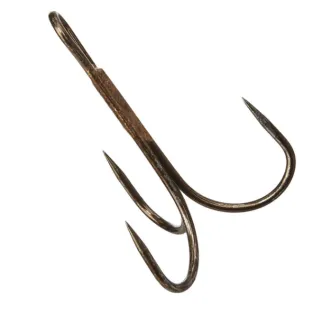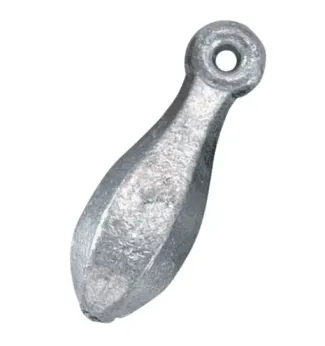PADDLEFISH

The paddlefish, known locally as spoonbill, was alive when dinosaurs were rumbling around in the late Cretaceous Period.
Paddlefish are one of the most unique fish in Oklahoma. Paddlefish have long oar or spoon-like bills and don’t look like any other Oklahoma fish. They also have smooth scaleless skin and broad shark-like tails.
During the spring, males develop sandpaper-like bumps (breeding tubercles) on their heads and back.
Paddlefish have wide gaping mouths and toothbrush-like bristles in their gills. They swim through the water with their mouth open and filter feed on small microscopic plankton, much like whale sharks do.
SPECIES PROFILE
- Oklahoma Distribution
Paddlefish are found mainly in the Neosho, Arkansas and Red River watersheds.
- Description
Paddlefish are one of the most unique fish in Oklahoma. They can live up to 50 years and range throughout the U.S. from Montana to Louisiana.
- Habitat
Paddlefish are well adapted to living in rivers and lakes. They inhabit many types of habitats and occur most frequently in deeper, low current areas such as side channels, backwater lakes and tailwaters below dams.
- Natural Food Sources
- Tiny zooplankton (microscopic insects)
- Spawning
Male paddlefish are old enough to spawn when they are four to nine years. Females spawn when they are 6-12 years old. Spawning season is from March through June, when spring rains raise the water levels of rivers and water temperatures reach 50°F-60°F. Males and females gather in schools and release their eggs over gravel or sandbars. This is called "broadcast spawning."
- Fish Facts
- Paddlefish are caught by snagging, usually beginning sometime in March and ending in late April, during their early spring spawning run. This prehistoric fish can be caught by snagging with a stout surf rod, heavy test line, and a large, barbless treble hook.
- Paddlefish were once very abundant throughout their range, but have declined in numbers. Threats to paddlefish include:
- Construction of dams which have affected breeding and feeding patterns
- Fish kills and water quality issues associated with dam operations
- Illegal harvest of adult paddlefish for caviar
- In 1992, fisheries biologists began an effort to re-introduce paddlefish to waters where they have become locally eradicated. Dams on several rivers had blocked the annual movements of paddlefish in several river systems. Hatchery professionals raised young paddlefish in Byron and Tishomingo and then released them in Kaw, Oologah, Texoma, and Hugo lakes.
- The fisheries division of the wildlife department has placed bands on thousands of paddlefish in lakes statewide. These bands are an important research tool allowing biologists to learn about population abundance, individual growth, and annual harvest. Anglers can assist in this effort by reporting banded harvest, not removing bands from released fish, and knowing the regulations. This research is being paid for through the federally administered State Wildlife Grant.
FISHING TIPS
Paddlefish do not eat food sources that anglers can replicate so the preferred method of take is snagging. Snagging requires a stout extra-heavy rod paired with fishing line that is 30-pound test or heavier. The end of the line is attached to a large barbless treble hook (size 8/0 to 14/0) and weight (2-ounce to 8-ounce).
Bank anglers have the best success in the tailwaters below dams and along river banks.
Snagging from the bank requires the angler to cast cross stream and make a few sweeps of the rod tip starting by pointing the rod tip at the spot of the cast and swinging it 90° to either side of the angler's body. Reel up the slack after each swing. DO NOT make swings within 20 feet of the bank as this can result in the tackle flying out of the water towards those on the bank.
Boat anglers can anchor and snag from a fixed position or troll in a S-shaped pattern up and down the river or lake with weight either off the bottom or suspended using a Luhr Jensen Dipsy Diver.
Paddlefish need inflowing water to migrate upstream to spawn. Peak spawning occurs when water temperatures are near 60°F and the watershed has experienced moderate to heavy rainfall.
Miami Park is known as the bank fishing paddlefish capital of the world. There is good bank access on both sides of the river. The best fishing at Miami Park occurs in late March through April when the Neosho River stage near Commerce is between 8 and 15 feet.
Other hotspots are below the dams at Grand, Hudson, Chouteau Bend Low Water, Ft. Gibson, Oologah and Kaw.
Habitat to Target
- Tailwater: area below dam.
- Gravel bars: holes and ditches within the main river channel or below riffle sections.
- Migration barriers: impassable riffles or low water dams.
- River mouth: area where inflowing water meets the lake.
Rod/Reel Setup
- 8' to 14' Extra-Heavy rod (Meat Hunter rods are most popular in Oklahoma)
- Spinning or casting reel
- 30-pound to 100-pound test line
Top Tackle
- Hook
Barbless treble hook in size 8/0, 10/0, 12/0 or 14/0
- Editor's pick: 8/0 Spoonbill King Barbless Treble Hook
Image
- Weight
2-ounce to 8-ounce casting weight
- Editor's pick: 4-ounce casting weight
Image
CLEANING TIPS
COOKING TIPS




